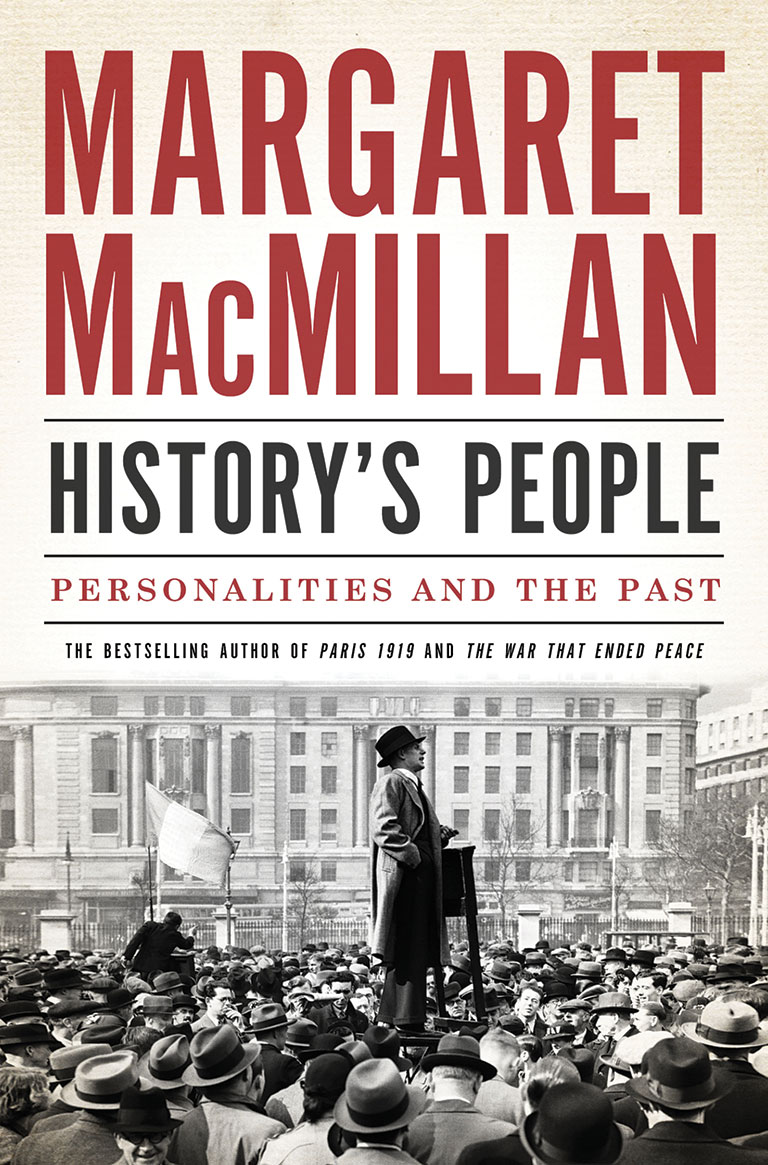History’s People: Personalities and the Past

History’s People: Personalities and the Past
by Margaret MacMillan
House of Anansi Press
400 pages, $24.95
This book is a compilation of the CBC-Massey lectures delivered in 2015, under the broad umbrella of the title History’s People, with sections headed Persuasion and the Art of Leadership, Hubris, Daring, Curiosity, and Observers. Margaret MacMillan (a friend of this reviewer for many years) draws effectively on several of her books to present a very varied group of historical subjects.
MacMillan’s persuasive leaders are German Prince Otto von Bismarck, U.S. President Franklin D. Roosevelt, and Canadian Prime Minster William Lyon Mackenzie King. This selection allows a good contrast between Bismarck’s work of persuading the German emperor and Roosevelt’s challenges of persuading the American public, and it is good to see King’s often-disparaged abilities presented clearly. All three leaders were in the vanguard in their countries in placating the working and agrarian classes. (Bismarck’s emperor acknowledged to his chancellor fears that someday they would be taken out from their offices and beheaded in the square outside their windows.) MacMillan doesn’t fall into the Yalta trap, so beloved of British historians, which suggests that Roosevelt was tricked by Stalin (bunk, I say), and she gives King full credit for weaving desperately through the conscription crises of the Second World War.
The Hubris chapter is slightly more tenuous. MacMillan’s main point is that Margaret Thatcher, Adolf Hitler, and Joseph Stalin all squandered great political capital, and in the first two cases ultimately failed, because of overconfident overreaching. She blames Thatcher’s fall on the so-called poll tax that fixed public-service costs from homes to individuals. I was closely involved in British politics at that time, and I think Europe was a greater problem. It is not the least of current ironies that most Britons today would enthusiastically endorse her then relatively moderate Euro-skepticism. Hitler’s mortal failure is said to have been the invasion of the Soviet Union in 1941. This is true, but his reasoning was not insane: He believed that if he didn’t get rid of Russia before Roosevelt brought the United States into the war, he would suffer precisely the fate that ultimately crushed him. Stalin is lumbered with the failed collectivization of agriculture, a humanitarian and economic disaster, but Stalin survived it and continued as Russian leader to 1953. His greatest mistake was precipitating the Cold War, but he did not live to see the end of it in the disintegration of the Soviet Union and Soviet Communism.
The Daring section ambitiously groups Lord Beaverbrook, Richard Nixon, and Samuel de Champlain. MacMillan reposes what is now obsolete confidence in the theory that Nixon actually broke laws in the Watergate scandal, rather than simply bungling the investigation (something he conceded). But her main point is correct: that one of the most successful presidential terms in U.S. history, which included the opening of relations with China, was for a time overshadowed by the Watergate nonsense. Beaverbrook made the daring move from Canada to Britain; but once he had become a rich underwriter in Montreal, he wasn’t actually risking much. Champlain was amazingly daring, dedicating most of his adult life to setting up a New France in a most inhospitable environment. He is rightly credited for his appreciation of indigenous peoples, but the author underplays the disparity in social development between the Europeans and the Aboriginals of New France, who had not invented the wheel or iron tools, serious agriculture, or permanent buildings.
The Curiosity section deals with British colonial women, including Elizabeth Simcoe, wife of John Graves Simcoe (in India), the redoubtable Gertrude Bell (Iraq), and Edith Durham (Albania). These are specialties of the author, and she handles them exceptionally well. The last section, Observers, groups famous diarists from Samuel Pepys, to the fabulous Mongol-Indian emperor Babur, to Canadians Robert de Roquebrune, Marcel Trudel, and Charles Ritchie, the German boulevardier Harry Kessler, and the Holocaust avoider (without leaving Germany) Victor Klemperer. In these less well-travelled areas, MacMillan is particularly sure-footed (even though pre- Quiet Revolution Quebec was not quite the Dark Age she presents from Trudel, and the priest-ridden ancien régime did preserve the French fact in North America for nearly two hundred years).
This book is, as anyone who knows the author and her work would expect, a very lively collection of cameo portraits of remarkable historic personalities. It is also a fine addition for the camp of those who believe that people make history and not the reverse.
Themes associated with this article
Advertisement




